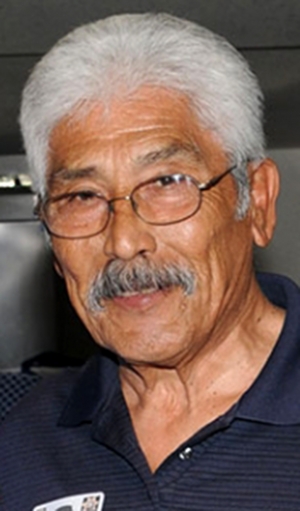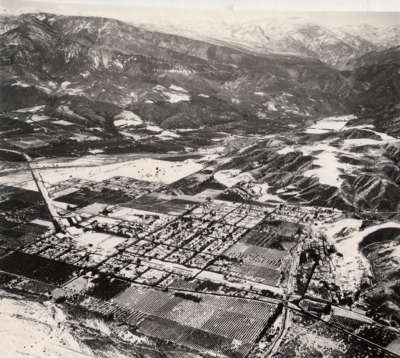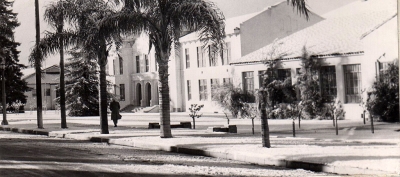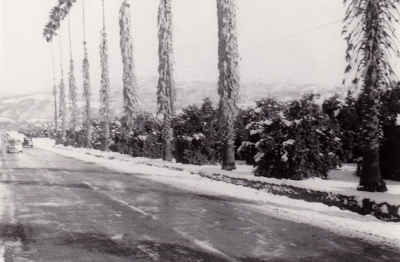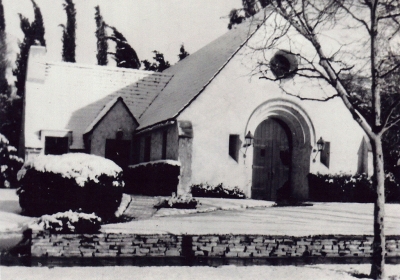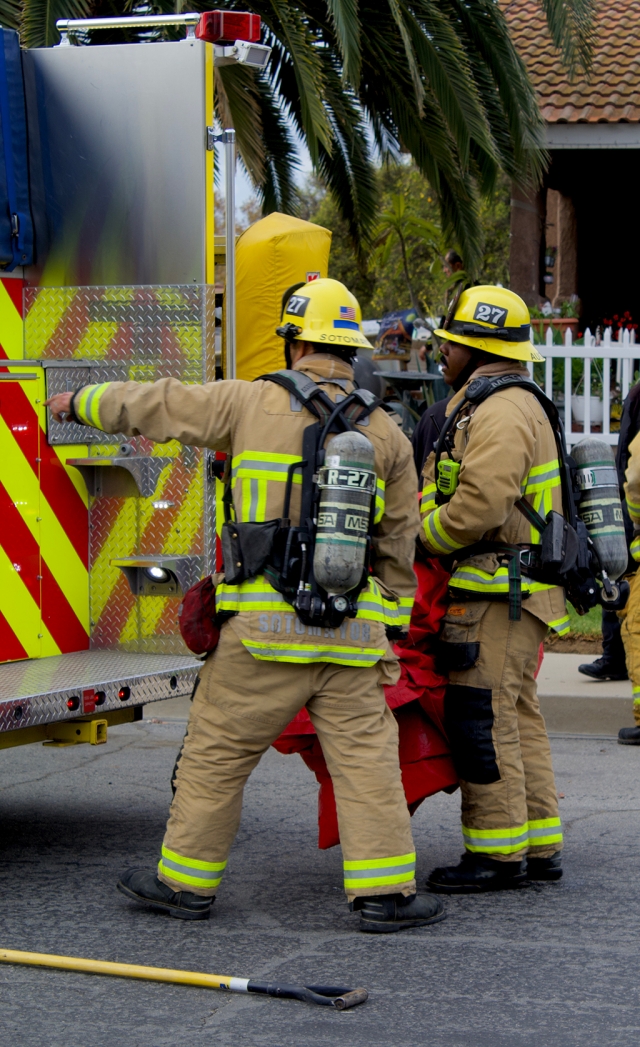|
By Gazette Staff Writers — Wednesday, December 22nd, 2021
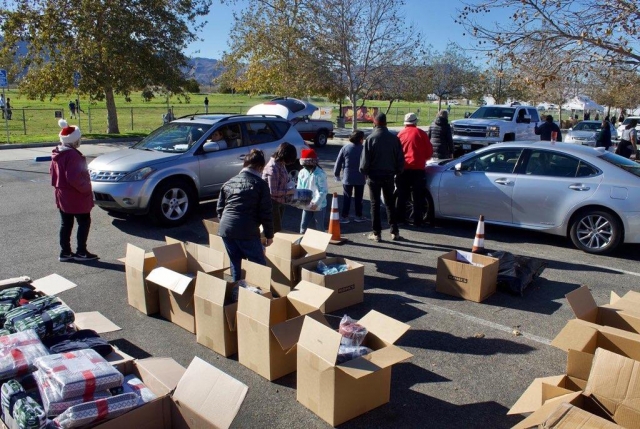 On Saturday, December 11th from 9am to noon at Fillmore’s Two Rivers Park, cars lined up for the Fillmore Community Holiday Giveaway. Families received age-appropriate toys, reading books and socks pre-packaged for pick-up. They also received blankets and a holiday bag of groceries if needed. Above and below, cars driving by to pick up their goodies, and volunteers helping package and hand them out. Photos courtesy Angel Esquivel-AE News. Enlarge Photo |
|
By Gazette Staff Writers — Wednesday, December 22nd, 2021
 On December 15th, the Santa Clara Valley Boys & Girls Club gave a big shout out to @trusportz_company for the large donation of gifts to the Fillmore club. All the kids had an early Christmas. Photos courtesy SCV Boys & Girls Club Facebook page. Enlarge Photo |
Now Hiring: Deputy City Clerk
The City of Fillmore is seeking a detail-oriented and highly organized professional to join our City Clerk’s Office as Deputy City Clerk. This key role supports City Council operations, maintains official records, ensures legal compliance, and helps uphold transparency in local government. If you’re passionate about public service, governance, and supporting elected officials, we encourage you to apply. Learn more and apply at www.fillmoreca.gov.
|
By Gazette Staff Writers — Wednesday, December 22nd, 2021
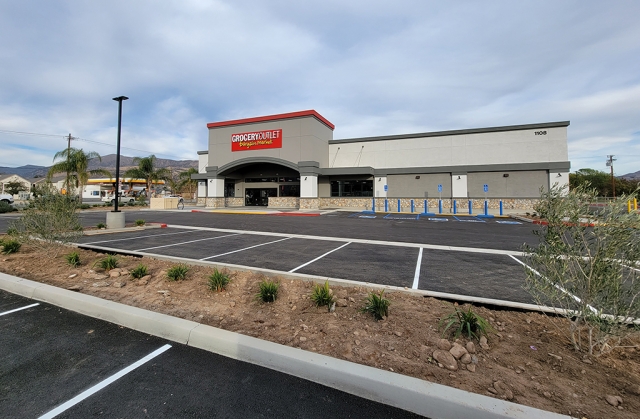 Fillmore’s Grocery Outlet has its new signs up and is preparing to open. Construction began in March of this year, and crews have worked non-stop to get the new outlet finished. The store is set to open in January 2022 according to Fillmore Grocery Outlet Facebook page. Enlarge Photo |
|
By Gazette Staff Writers — Wednesday, December 22nd, 2021
At the last City Council meeting, Duke Bradbury, Vice President of Thin Blue Line of Ventura County, proposed that the street immediately west of Central Avenue, adjacent to our Sheriff's Substation, be named for late former Sheriff Deputy Max Pina. The Gazette published a short history in last week's edition and promised to extend it for this week. Max's 53-years of public service could fill a book, but here are some primary reasons for supporting the naming of the street after Max Pina: He was Citizen of the Year for 1992. He was in service as a Fillmore police officer and then as Ventura County Sheriff's Deputy in Fillmore for over 20-years. Personal and professionally concern for Fillmore's youth. Spearheaded the raising of over $105,000 for the Fillmore Boys & Girls Club. Major coordinator of the Christmas Food Basket Program. Served as liaison officer between the gangs and local police. Received the second annual Baha'i Human Rights Award in 1990. Max was 1996 Employee of the Month. Selected Fillmore's first "Community Service Officer". Founding member of Fillmore Boys & Girls Club. Max was also instrumental in obtaining a grant of $18,000 for small neighborhood park next to the Storefront office, serving B&G Club. Recognition of Valuable Service to City of Fillmore 1999. Recognition of police officer since 1971. Leadership in Boys & Girls Club. Reduced crime and gang violence by work in North Fillmore Storefront. Won Medal of Valor for actions during 1978 floods, saving citizens trapped by flood waters with human chain of other officers. Max was awarded Officer of the Year in 1980 and 1983, also Optimist Club Distinguished and Dedicated Service Award, 1994. Dedicated Service Award to North Fillmore Storefront, "Providing positive presence after school programs, adult education, counseling and legal services, prevention programs and other activities. Provided safe place for persons wishing to contact police”. In 2003 the Storefront welcomed its one hundred thousandth visitor. It looks like our City Council will have plenty of information to basis its decision on. Thank you, Max Pina, for your life's work in the service of the City of Fillmore. |
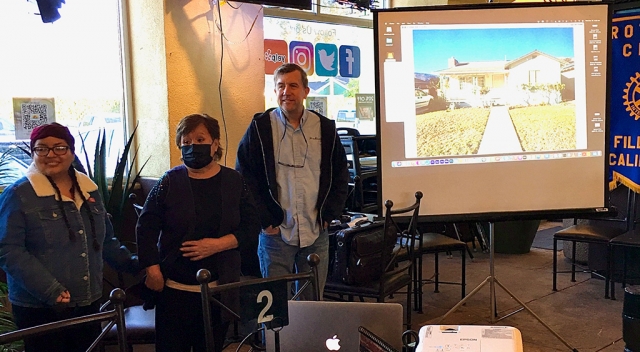 Oliva and her mother, homeowner Bene Ambrosio, with Sean McCulley. Ambrosio’s home was chosen for the Rotary Club’s House Painting Project. Photo courtesy Rotarian Martha Richardson. Enlarge Photo By Gazette Staff Writers — Wednesday, December 22nd, 2021
Initially, information and applications for Fillmore Rotary’s House Painting Project were handed-out to people who needed this work done but couldn’t personally or financially do it themselves. The applications were reviewed, and the project began. Several Rotarians sanded, scraped, and did all the prep work. Professionals took care of the termite problem and replaced new wood where needed and did the final painting. Rotarian Sean McCulley headed up this project and showed before and after photos to the Club. The owner of the property, Bene Ambrosio and her daughter, Oliva, were present to thank the club for the service project. |
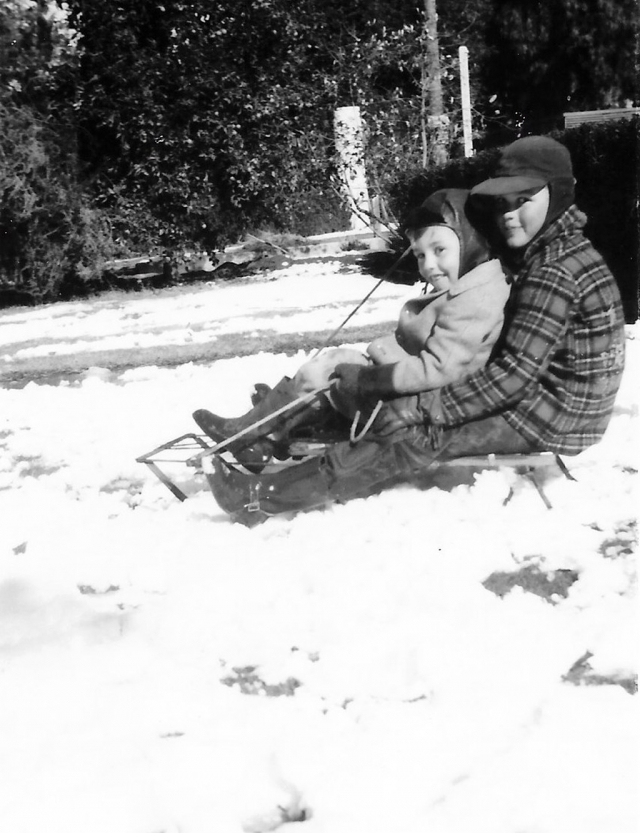 Phil and Fred Young enjoy Fillmore snow in 1949. Photos Courtesy Fillmore Historical Museum. Enlarge Photo By Gazette Staff Writers — Wednesday, December 22nd, 2021
Courtesy Fillmore Historical Museum As far as we know, Fillmore has never had a white Christmas, but a few weeks after Christmas in 1949 it seemed the entire area had been transported to the northern climes. Unseasonably cold weather hit the area from January 8th to January 12th, much of Southern California received measurable snowfall. It even snowed on Catalina Island! On January 8th, temperatures in Fillmore dropped to 28 degrees and remained low for almost a week. Citrus growers throughout the area lost much sleep keeping the smudge pots going in an attempt to save the navel orange crop which was just being harvested. School closed as did a few businesses. One business that did not close was the telephone exchange located on the ground floor of the Masonic Building. At that time, all calls had to go through an operator, there was no such thing as direct dial. On January 12, the number of calls almost doubled from a normal day of about 6,300 to more than 11,000. The previous high had been 8,000 calls. Gretchen Stanley, the chief operator, called in her staff so all 13 switchboards were covered. Apparently the high volume was due to the snowstorm, the low temperature, and the closing of the high school. According to Phil Young, “My brother Fred and I had, it seemed, endless play time in the white stuff. I also recall going with my dad, Merlin Young, in his pick-up to look at the snow around the area. On that little drive he stopped to talk with Brick Fansler. As ranchers do, they analyzed the situation and the possible impact on the orange crop. I was thinking: can we just go home for some more snow fun. Even though it was in January it truly was a white Christmas.” On Guiberson Road, Bill Shiells pulled son Bill and the neighbor kids around in the snow on the family toboggan. If you have snow photos you would like to share, post them to the museum’s Facebook page or send to the Museum at fillmore.museum@gmail.com. |
|
By Gazette Staff Writers — Thursday, December 16th, 2021
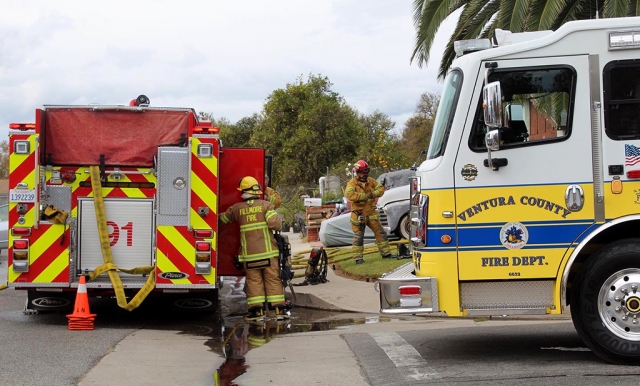 On December 13th, 2021, at 10:20am, Fillmore City Fire (E91) and Ventura County Fire were dispatched to a reported structure fire in the 800 block of 2nd Street, across from Fillmore Middle School. Arriving crews found an active fire and quickly knocked it down by 10:30am. AMR Paramedics were also requested to assess a smoke inhalation patient. Red Cross was notified for what was being described as two adults who were going to be displaced, according to radio traffic. Cause of the Fire is under Investigation. Photos courtesy Angel Esquivel-AE News. Enlarge Photo |
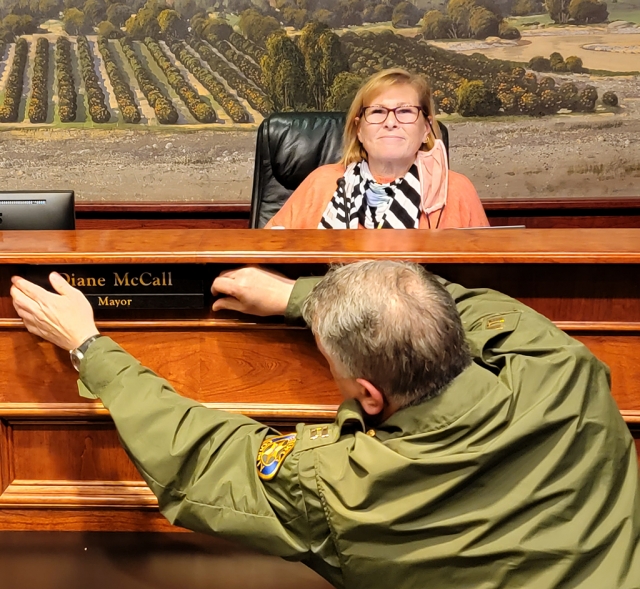 At Tuesday night’s city council meeting Fillmore’s Diane McCall was appointed Mayor of Fillmore. Enlarge Photo By Gazette Staff Writers — Thursday, December 16th, 2021
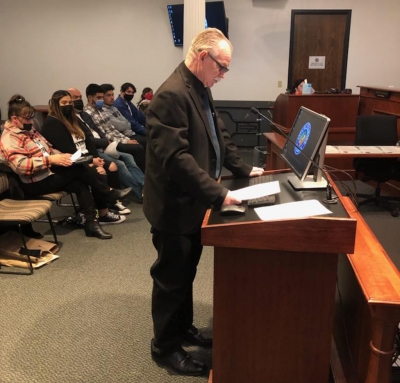 Duke Bradbury, Vice President of Thin Blue Line of Ventura County, presented to the City plans to name a street in remembrance of Fillmore’s former Fillmore PD Sgt. Max Pina. Enlarge Photo Council selected Diane McCall to be Fillmore's new Mayor, and Lynn Edmonds to be new Mayor Pro-Tem. 7.C The second reading to adopt Ordinance 21-933/Zoning Ordinance Amendment 21-02 to adopt the MWELO by reference, was approved. 7.D City Staff recommended that City Council approve an amendment to the current contract Professional Service Agreement with InfoSend, Inc. (InfoSend) of Anaheim, California, for an amount not to exceed a total of $120,000 for an additional 36-month (three year) period to continue providing data processing, printing, and mailing services to the City. Approved. 7.E. SWS Inc. Contract Amendment Solid Waste Contract. 7.F City Attorney Contract Amendment The City’s legal expenses can vary greatly from year -to-year depending on unanticipated legal matters such as claims and lawsuits. If the entire FY 2021-22 City Attorney budget of $295,000 will be expended this year, the proposed contract amendment would increase City Attorney costs by approximately $10,000. City Attorney contract amendment was unanimously Approved. 8.H Staff requested that the City Council accept a Fiscal Year (FY) 2020 Assistance to Firefighters Grant from FEMA. Approve an appropriation of $13,870 from the City’s general fund reserves to Fund 213; and 2. Approve the acceptance of FEMA FY 2020 AFG grant and authorize the City Manager or his designee to undertake any actions necessary to accept the grant. Your Fillmore Fire Department is in dire need of Cardiac Heart Monitors and Automated External Defibrillators (AEDs). Because of this need, Fillmore Fire Department has taken the lead on the FY 2020 AFG Regional Grant for monitors and AEDs. Of all grant items being awarded to the regional fire services, the monitors are the most expensive. The Fire Department is required to provide a heart monitor whenever we have paramedic staffing in place, which occurs almost daily. Acceptance of FEMA FY 2020 AFG grant is approved. |
|
By Gazette Staff Writers — Thursday, December 16th, 2021
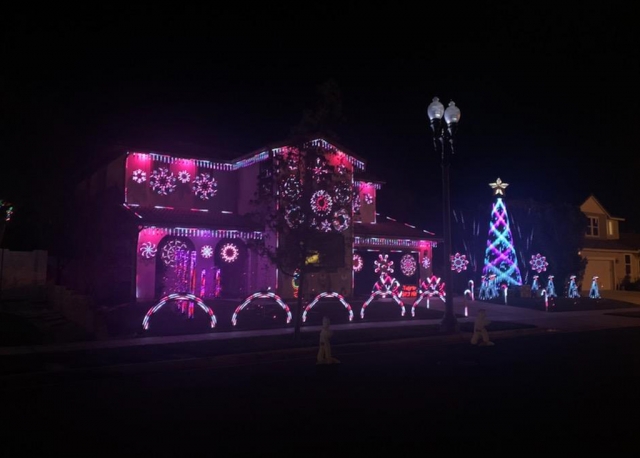 Christmas season is here! A holiday light and music show are on display at 408 Edgewood in The Bridges every night at 7:00, 7:30 and 8:00pm (past hours). The display includes music and visuals. You can tune into 97.7 FM on your car radio to listen to the Christmas music. Homeowner Ron Howard went all out to make sure this Christmas season is celebrated in Fillmore. Enlarge Photo |
 Fillmore Condors Cross Country team competed at the AAU National Cross-Country Championships against over 2,000 other athletes on Saturday, December 4th in North Carolina. Back Row: Leah Barragan, Kirsten Theobald, Lucy Zuniga, Abel Arana, Diego Felix, Kristen and Kaylie Theobald. Front Row: Athena and Caroline Villela, Mila Castro, Robert Marin Jr., Giovanni and Sophia Cortez, Itzel Arana, Zoey Zuniga and Kenzie Theobald. Photos Courtesy Fillmore Condors Cross Country President Erika Arana. Enlarge Photo By Gazette Staff Writers — Thursday, December 16th, 2021
 Fillmore Condors Destina Guzman who placed 12th overall, and 11th individually and Lucy Zuniga who placed 23rd overall finish and 19th individually, for the 10-year-olds. Enlarge Photo Courtesy Fillmore Condors Cross Country President Erika Arana The Fillmore Condors Cross Country team concluded their 2021 season by participating in the AAU National Cross-Country Championships on Saturday, December 4th, 2021. Although USATF was our first option, with Covid restrictions still stricter in Kentucky, we decided as a conference to travel to Charlotte, North Carolina instead. Roughly 2,000 athletes followed, to compete at the 114+ acres, known as the 5k Championship Cross-Country course at McAlpine Creek Park. This serene multi-use park has the deepest history of any course in North Carolina, and arguably of any course in the Southeast. It is legendary for its flat, fast surface that produces remarkable times, although it does have one steep decent-sized hill. Weather conditions felt just like California. This year we were able to have a full season, with athletes racing every Saturday to create an elite National team, based off rankings within the Valley Youth Conference. Our eighteen local Fillmore Condors joined other area runners to form Valley United Striders. Condor representatives were Leah Barragan, Mila Castro, Destina Guzman, Robert Marin Jr., and siblings, Abel, and Itzel Arana; Giovanni, and Sophia Cortez; Diego, and Santiago Felix; Kaylie, Kenzie, Kirsten, and Kristen Theobald; Athena, and Coraline Villela; Lucy and Zoey Zuniga. Beginning the day with the oldest division was the girls 13 and 14-year-olds, with 184 runners. Leah Barragan 137th overall and 88th, individually for the 13-year-olds; Leah had a time of18:17.65. The boys 13 & 14-year-old division had an impressive field of 219 runners. Diego Felix placing 143rd overall and 68th individually, for the 14-year-olds; PR 15:55.21. These two ran their last youth 3,000-meter (2.48 mile) race. Following were the girls 11 and 12-year-old division, which consisted of 217 runners. Kaylie Theobald placed 111th overall and 68th individually, for the 12-year-olds; 12:53.01. The boys 11 and 12-year-old division race, was the largest race of the day, stacked with 227 runners. Santiago Felix finished strong with a time of 11:42.78, placing 73rd overall and 41st in the 12-year-olds, individually. Right behind him, was teammate Abel Arana who crossed the finish line with a time of 11:50.42, placing 80th overall and 35th individually, for the 11-year-olds. Abel and his Strider teammates ran away with a 3rd place podium title, all running a 3,000-meter (1.86 mile) race. 169 runners toed the starting line in the girls 9 and 10-year-old race, with four of the Striders being Condors. This Strider team was favored to win, and that they did! 1st place National Champions podium appearance. Destina Guzman, was a completely different runner this season. She raced with confidence, placing 12th overall, and 11th individually for the 10-year-olds. Lucy Zuniga, behind her teammate, crossed with a time of 12:24.49 for a 23rd overall finish and 19th individually, for the 10-year-olds.Theobald sisters, Kirsten ran 12:36.36, 31st overall and 24th individually; Kristen struggled behind to hold onto her sister, running13:14.8, 63rd overall and 41st individually, both for the 10-year-olds. First time cross-country runner, Giovanni Cortez, raced against 167 runners. His time was 14:58.53, placing 145th overall and 63rd individually, for the 9-year-olds. This division ran the 3,000-meter race (1.86 mile) race. Itzel Arana was our top Condor and Strider runner all season, and she did not disappoint at Nationals, in the girls 7 and 8-year-olds division. She peaked a season PR time of 8:28.48, placing 12th overall and 9th individually, for the 8-year-olds. Teammates, and sisters, Caroline, and Athena Villela, also first time cross-county runners were in the same race of 105 runners. Caroline crossed the finish line at9:35.58, placing 58th overall and 41st individually, for the 8-year-olds. Her sister Athena placed 99th overall, and 37th for the 7-year-olds, running 11:20.60. Both sisters also hit season PR’s. Itzel and Caroline earned a 2nd place podium finish in their 2,000-meter (1.24 mile) race. The last combined race of the day concluded with the 6U’s, in a field of 67 boys and girls. The girl’s first National experience was one to remember, as our Condor girls took home a National Champion team title. Mila Castro speed her way to a time of 5:08.34 for a 13th place finish. Seven seconds behind in 18th place, was Sophia Cortez; 5:15.83. Teammates, Zoey Zuniga, and Kenzie Theobald paced off each other to finish milliseconds away from one another. Zoey 21st; 5:25.32, and Kenzie, 22nd,5:25.82. The only Condor boy to represent was, Robert Marin Jr. who finished 22nd for the boys; 4:57.58. All the 6u’s ran 1,000-meter (.62 mile) race. Fillmore Condors Cross Country is a non-profit organization under Heritage Valley Blazers Inc. We are the only cross-country team in Fillmore; we represent our city with pride. The Condors are coached by Gerardo Flores, Jared Perez, Jessica Huerta, Angel Venegas, Sandy, and Felix “Punkie” Zuniga. “Every year is a new experience. We are always amazed to see what these athletes’ minds and bodies endured in the 4.5 months of training for Nationals. They never disappoint!” Condors President Erika Arana and board members would like to thank the following for sponsoring our athletes this memorable cross-country season: Fillmore Lions Club, Fillmore Rotary Club, Heritage Valley Blazers Inc., and the Fillmore Community for purchasing Jamba Juice cards from our athletes. For more XC or Track info, contact 805-624-1129. FOREVER CONDORS! |











